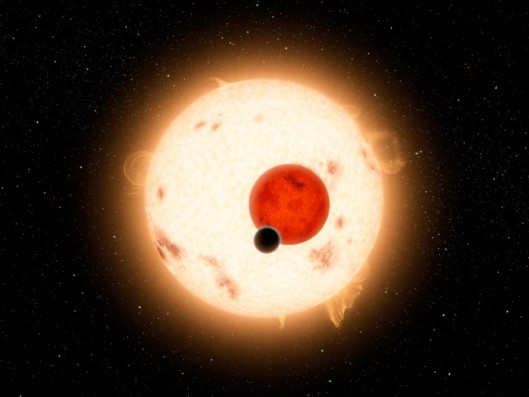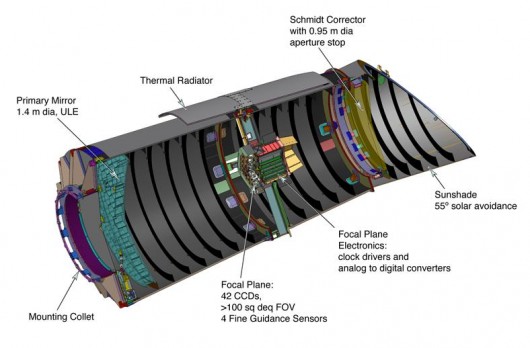If NASA has anything to say about it, Kepler is down, but not out. At a press teleconference on Thursday it announced that it has abandoned efforts to repair the damaged unmanned probe, which was designed to search for extrasolar planets and is no longer steady enough to continue its hunt. But the space agency is looking into alternative missions for the spacecraft based on its remaining capabilities.
The announcement that Kepler would not resume its original operations was made by Paul Hertz, NASA astrophysics director. However, work will continue over the coming months on sorting out the spacecraft’s remaining capabilities and determining what tasks they’d be suited for.
Kepler completed its four-year primary mission in November 2012 and was at the beginning of its extended mission when two of its four reaction wheels, which help it to maintain attitude, failed. The first went in July 2012, but Kepler was designed with a redundancy factor, so this did not affect operations. However, the loss of a second reaction wheel last May was more than the probe could handle and it was placed in a rest state while engineers worked to determine if the craft was salvageable.
According to Charles Sobeck, Kepler deputy project manager, NASA's Ames Research Center, tests were completed last week to determine if either of the faulty reaction wheels could be brought back online. The tests began on wheel number four on Thursday, July 18, which managed to spin anti-clockwise, but not clockwise in response to commands. This wasn't surprising because number four is the more badly damaged of the two. On Monday, July 22, wheel number two was ordered to spin and did so in both directions.
This was followed by two weeks of engineering reviews and a final test was conducted last Thursday. Though wheel number two spun, it overheated and Kepler automatically shifted into safe mode. It was determined afterward that the problem could not be corrected.
The good news was that Kepler did perform, but the bad news was that it was not up to mission specs. Mission control was able to point the probe at Earth, so the data still on board could be downloaded and Sobeck says that they can make the probe point at a target within ten seconds of arc.
A reaction wheel similar to the ones that failed on Kepler (Image: NASA)
Despite the inability to repair the craft, William Borucki, Kepler science principal investigator, NASA's Ames Research Center, remains upbeat. He says that Kepler has shown that our galaxy is "filled to the brim with planets" with many small, Earth-type planets out there and so many planets in total that if you look at any star in the sky, the probability is that it has a planetary system.
"I really feel immense satisfaction at what the mission has accomplished,” says Borucki. “... I feel at the bottom of the ocean and absolutely covered with an ocean of data."
Borucki went on to say that the initial results of the Kepler mission found few Earth-like planets in the habitable zone around other stars, but that it’s still early days. So far, the planets found tend to be around red dwarfs, which are stars smaller and cooler than the Sun and the planets are larger than Earth.
This is because it takes three or four transits of the suspected planet across the face of its star before they can be confirmed by observing dips in the star’s brightness. Since the habitable zone around a red dwarf is close to the star, the planet’s year is very short, so the transits occur in a short time. If the planet is around a Sun-like star, the planet will have a year similar in length to Earth’s, so the required data wasn't accumulated until the end of Kepler’s four-year mission and hasn't been studied yet. Borucki says that he expects hundreds or thousands of new planets to be revealed from the accumulated data with more Earth-like candidates.
Exactly what new tasks Kepler will be assigned has yet to be determined. NASA is continuing its study and has put out a call for papers to discuss alternatives. Possible future missions may include looking for asteroids, comets, supernovae, or gravity lensing.
Source: NASA
Copyright © gizmag 2003 - 2013 To subscribe or visit go to: http://www.gizmag.com



